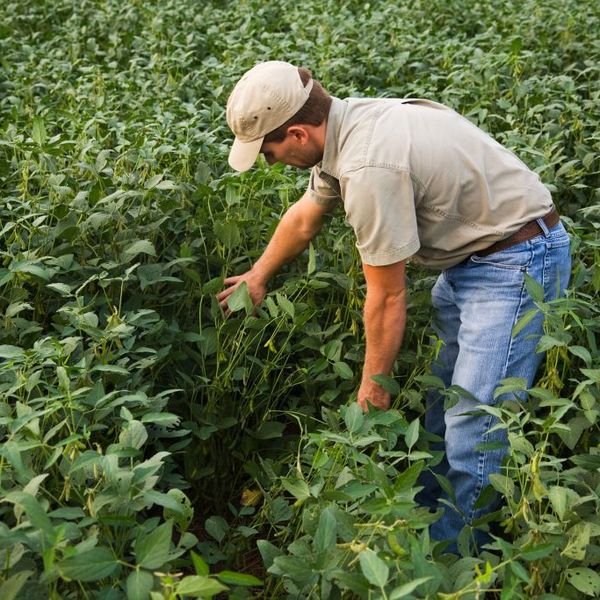Americans Grow Cannabis to Beat the Recession
Some people cancel holidays abroad, others stage yard sales or start shopping at low-cost supermarkets. To that list must now be added a new way to get through economic hard times: grow cannabis.
Law enforcers on the west coast of the US and in the middle states straddled by the foothills of the Appalachian mountains are reporting a common trend. It is boom time for marijuana cultivation, and much of the incentive they say is to beat the recession.
So far this year, police in parts of the country where cannabis is traditionally grown have chopped down plants with a street value of $12bn. The core growing area is in California, Washington and Oregon to the west, but the Appalachian states of Kentucky, Tennessee and West Virginia are also witnessing an explosion.
More than 600,000 cannabis plants have been cut and burned in those states this summer, reversing a previous decline in production brought about by stringent law enforcement. It is not only the quantity of crop that is on the rise, the nature of the growers is also changing.
Ed Shemelya, who leads the marijuana eradication programme in the Appalachia region, says a new type of grower is emerging wholly different to the family cartels that have cultivated the drug for generations. "We are seeing a lot more individuals who wouldn't normally be growing marijuana. They are not your professionals."
Shemelya puts it down to the dire economy in this part of America. The region is almost entirely dependant for jobs on coal mining, which has suffered severely from the recession.
"People are growing marijuana to supplement their income or support themselves in poor economic times. This is about economic necessity," he said.
The newcomers to the business are typically restricting their practices to fields of around 80 plants - that's tiny compared to the mega cultivation seen in California where 5.3m plants were destroyed last year up from 4.9m in 2007. But at around $2,000 a plant, that still provides a good living in Appalachia.
Growers tend to locate their crops as close to their homes as possible, on the edge or just inside the forest that carpets much of the foothills. They clear foliage from the trees to allow in light, then grow the plants between the trunks to hide them from aerial detection by the drug authorities.
On top of the economic incentive, the clampdown on marijuana traffic across the border from Mexico has also provided a reason for new participants to enter the market. Dave Keller, a drug enforcement officer in Appalachia, told the Associated Press that both small and large growers were trying to fill the void.
The booming business is proving challenging not only for law enforcement. A devastating forest fire in the mountains of Los Padres National Forest in California last month was found to have been started by a Mexican drug cartel that had been cooking marijuana on a camp fire. Some 30,000 plants were seized from the farm hidden away in the forest.
An Urgent Message From Our Co-Founder
Dear Common Dreams reader, The U.S. is on a fast track to authoritarianism like nothing I've ever seen. Meanwhile, corporate news outlets are utterly capitulating to Trump, twisting their coverage to avoid drawing his ire while lining up to stuff cash in his pockets. That's why I believe that Common Dreams is doing the best and most consequential reporting that we've ever done. Our small but mighty team is a progressive reporting powerhouse, covering the news every day that the corporate media never will. Our mission has always been simple: To inform. To inspire. And to ignite change for the common good. Now here's the key piece that I want all our readers to understand: None of this would be possible without your financial support. That's not just some fundraising cliche. It's the absolute and literal truth. We don't accept corporate advertising and never will. We don't have a paywall because we don't think people should be blocked from critical news based on their ability to pay. Everything we do is funded by the donations of readers like you. Will you donate now to help power the nonprofit, independent reporting of Common Dreams? Thank you for being a vital member of our community. Together, we can keep independent journalism alive when it’s needed most. - Craig Brown, Co-founder |
Some people cancel holidays abroad, others stage yard sales or start shopping at low-cost supermarkets. To that list must now be added a new way to get through economic hard times: grow cannabis.
Law enforcers on the west coast of the US and in the middle states straddled by the foothills of the Appalachian mountains are reporting a common trend. It is boom time for marijuana cultivation, and much of the incentive they say is to beat the recession.
So far this year, police in parts of the country where cannabis is traditionally grown have chopped down plants with a street value of $12bn. The core growing area is in California, Washington and Oregon to the west, but the Appalachian states of Kentucky, Tennessee and West Virginia are also witnessing an explosion.
More than 600,000 cannabis plants have been cut and burned in those states this summer, reversing a previous decline in production brought about by stringent law enforcement. It is not only the quantity of crop that is on the rise, the nature of the growers is also changing.
Ed Shemelya, who leads the marijuana eradication programme in the Appalachia region, says a new type of grower is emerging wholly different to the family cartels that have cultivated the drug for generations. "We are seeing a lot more individuals who wouldn't normally be growing marijuana. They are not your professionals."
Shemelya puts it down to the dire economy in this part of America. The region is almost entirely dependant for jobs on coal mining, which has suffered severely from the recession.
"People are growing marijuana to supplement their income or support themselves in poor economic times. This is about economic necessity," he said.
The newcomers to the business are typically restricting their practices to fields of around 80 plants - that's tiny compared to the mega cultivation seen in California where 5.3m plants were destroyed last year up from 4.9m in 2007. But at around $2,000 a plant, that still provides a good living in Appalachia.
Growers tend to locate their crops as close to their homes as possible, on the edge or just inside the forest that carpets much of the foothills. They clear foliage from the trees to allow in light, then grow the plants between the trunks to hide them from aerial detection by the drug authorities.
On top of the economic incentive, the clampdown on marijuana traffic across the border from Mexico has also provided a reason for new participants to enter the market. Dave Keller, a drug enforcement officer in Appalachia, told the Associated Press that both small and large growers were trying to fill the void.
The booming business is proving challenging not only for law enforcement. A devastating forest fire in the mountains of Los Padres National Forest in California last month was found to have been started by a Mexican drug cartel that had been cooking marijuana on a camp fire. Some 30,000 plants were seized from the farm hidden away in the forest.
Some people cancel holidays abroad, others stage yard sales or start shopping at low-cost supermarkets. To that list must now be added a new way to get through economic hard times: grow cannabis.
Law enforcers on the west coast of the US and in the middle states straddled by the foothills of the Appalachian mountains are reporting a common trend. It is boom time for marijuana cultivation, and much of the incentive they say is to beat the recession.
So far this year, police in parts of the country where cannabis is traditionally grown have chopped down plants with a street value of $12bn. The core growing area is in California, Washington and Oregon to the west, but the Appalachian states of Kentucky, Tennessee and West Virginia are also witnessing an explosion.
More than 600,000 cannabis plants have been cut and burned in those states this summer, reversing a previous decline in production brought about by stringent law enforcement. It is not only the quantity of crop that is on the rise, the nature of the growers is also changing.
Ed Shemelya, who leads the marijuana eradication programme in the Appalachia region, says a new type of grower is emerging wholly different to the family cartels that have cultivated the drug for generations. "We are seeing a lot more individuals who wouldn't normally be growing marijuana. They are not your professionals."
Shemelya puts it down to the dire economy in this part of America. The region is almost entirely dependant for jobs on coal mining, which has suffered severely from the recession.
"People are growing marijuana to supplement their income or support themselves in poor economic times. This is about economic necessity," he said.
The newcomers to the business are typically restricting their practices to fields of around 80 plants - that's tiny compared to the mega cultivation seen in California where 5.3m plants were destroyed last year up from 4.9m in 2007. But at around $2,000 a plant, that still provides a good living in Appalachia.
Growers tend to locate their crops as close to their homes as possible, on the edge or just inside the forest that carpets much of the foothills. They clear foliage from the trees to allow in light, then grow the plants between the trunks to hide them from aerial detection by the drug authorities.
On top of the economic incentive, the clampdown on marijuana traffic across the border from Mexico has also provided a reason for new participants to enter the market. Dave Keller, a drug enforcement officer in Appalachia, told the Associated Press that both small and large growers were trying to fill the void.
The booming business is proving challenging not only for law enforcement. A devastating forest fire in the mountains of Los Padres National Forest in California last month was found to have been started by a Mexican drug cartel that had been cooking marijuana on a camp fire. Some 30,000 plants were seized from the farm hidden away in the forest.

